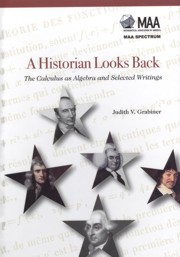Book contents
- Frontmatter
- Contents
- Introduction
- Part I The Calculus as Algebra
- Preface to the Garland Edition
- Acknowledgements
- Introduction
- 1 The Development of Lagrange's Ideas on the Calculus: 1754–1797
- 2 The Algebraic Background of the Theory of Analytic Functions
- 3 The Contents of the Fonctions Analytiques
- 4 From Proof-Technique to Definition: The Pre-History of Delta-Epsilon Methods
- Conclusion
- Appendix
- Bibliography
- Part II Selected Writings
- Index
- About the Author
Conclusion
from Part I - The Calculus as Algebra
- Frontmatter
- Contents
- Introduction
- Part I The Calculus as Algebra
- Preface to the Garland Edition
- Acknowledgements
- Introduction
- 1 The Development of Lagrange's Ideas on the Calculus: 1754–1797
- 2 The Algebraic Background of the Theory of Analytic Functions
- 3 The Contents of the Fonctions Analytiques
- 4 From Proof-Technique to Definition: The Pre-History of Delta-Epsilon Methods
- Conclusion
- Appendix
- Bibliography
- Part II Selected Writings
- Index
- About the Author
Summary
Lagrange's commitment to the necessity of an algebraic foundation for the calculus led him to the major accomplishments of the FA and CF: the sharply argued critique of the prevailing eighteenth century foundations for the calculus, the study of functions by means of their power series expansions, the derivation and use of the remainder term of the Taylor series, and the development of what are essentially delta-epsilon proofs. His influence on the development of analysis in the nineteenth century rests on these accomplishments.
The development of the foundations of the calculus from Newton and Leibniz to Weierstrass, and the length of time this development took, may illustrate how hard to understand the concepts involved are. The difficulties are clear to anyone who has taught the calculus. Mathematics did not develop in the way in which we teach it in our elementary courses; nevertheless, ideas which are difficult for beginning students today were often sources of great difficulty in the past. The connection between equality of derivatives and a set of complicated delta-epsilon inequalities, and the whole motivation for the rigorous defintions, still troubles many a student.
Delta-epsilon proofs, once one has seen a few examples, are easy to construct. The verbal limit-concept is intuitively plausible as soon as the student begins thinking about tangents, or about rates of change. But the difficulty lies in bringing these two ideas together. That the basic equations between limits of ratios are actually sets of possible inequalities seems contrary to all expectation. Not until the calculus was over a century and a half old was this conclusion finally accepted.
- Type
- Chapter
- Information
- A Historian Looks BackThe Calculus as Algebra and Selected Writings, pp. 101 - 102Publisher: Mathematical Association of AmericaPrint publication year: 2010



